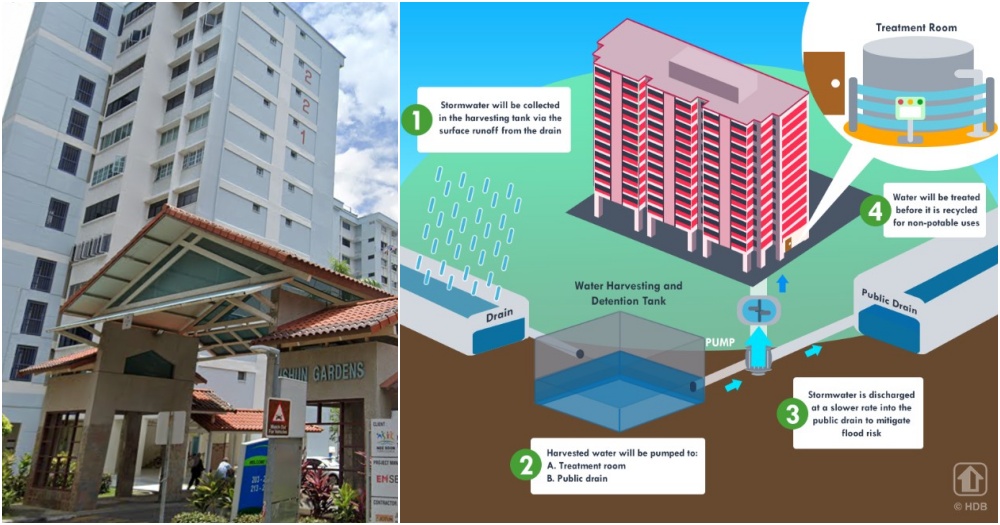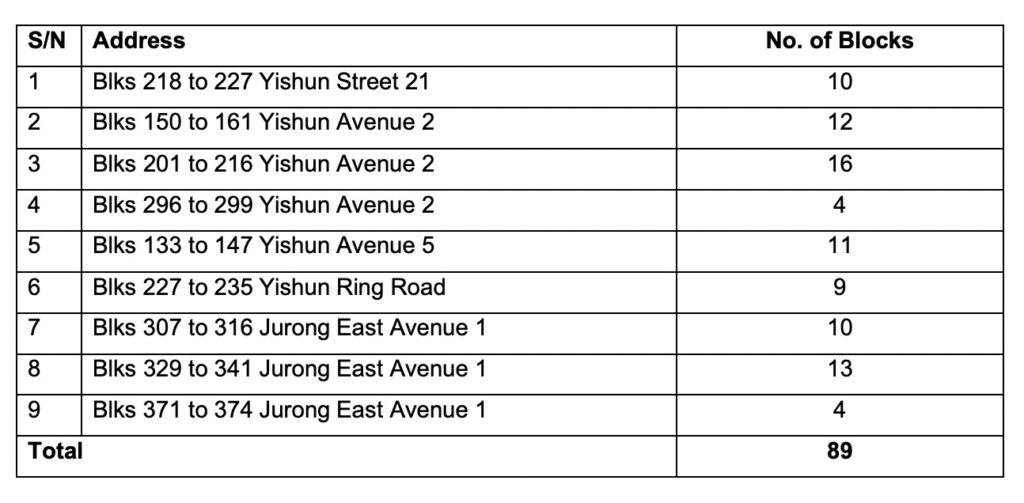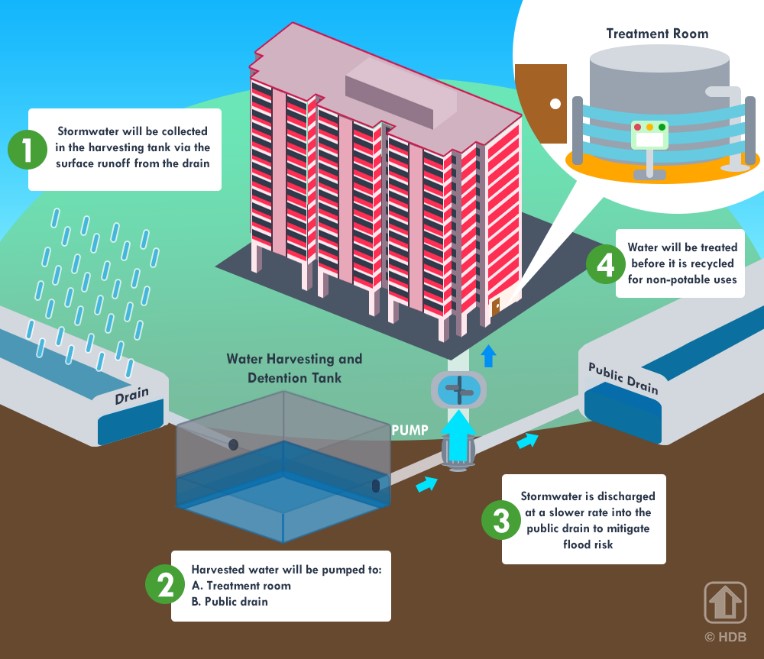
89 HDB blocks across Yishun and Jurong will have UrbanWater Harvesting Systems (UWHS) installed at common areas by 2027, HDB said in a press release issued on Monday (Mar. 28).
According to HDB, the systems could potentially reap water savings of about 17,500 cubic metres per year, or the average yearly consumption of potable water of over 85 units of 4-room HDB flats.
The tender for the implementation of this project will close on May 20. Construction is expected to commence in 2023 and complete in 2027.
Here is the full list of blocks in Yishun and Jurong that will have the UWHS installed:

This is the first time the UWHS will be installed in existing housing estates in Singapore.
What is the UWHS?
According to HDB, the UWHS is designed to “maximise the volume of rainwater collected by harvesting stormwater surface runoff from the ground area surrounding multiple residential blocks”.
The system’s rainwater harvesting capability and water detention capacity allows for a single UWHS to harvest from and dispense water to as many as 12 residential blocks, for non-potable uses, such as washing of common areas and watering of plants.
The UWHS can save up to 50 per cent of water usage for these purposes, said HDB.
Additionally, the channelling of stormwater into the UWHS’ harvesting and detention tank can mitigate potential flood risks in an estate in the event of a heavy downpour by slowing down the rate of discharge of stormwater into the drainage system downstream.
How it works
The stormwater from surface runoff that is discharged into an estate’s surrounding drainage system will first be channelled into the UWHS’ harvesting and detention tank.
It will then be pumped to the treatment room and public drain.
Here’s an illustration by HDB to show how the UWHS works:

Was first introduced in BTO projects in 2018
The system was first introduced in all suitable Build-to-Order (BTO) projects in 2018.
According to HDB, retrofitting the UWHS into existing estates is more challenging.
In new BTO projects, the UWHS infrastructure can be planned and designed upfront to ensure it is located where the most amount of rainwater can be collected through the drain networks.
Installing UWHS into existing estates, however, involves analysing the flow of the rainwater in the catchment area, and identifying suitable locations to accommodate the system amidst other essential services infrastructure that would already be in place underground.
HDB said that it will study the cost-effectiveness of the system in reducing potable water consumption and mitigating flood risks in Yishun and Jurong first, before deciding on the extent of future scale-up to other suitable estates.